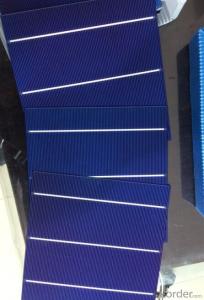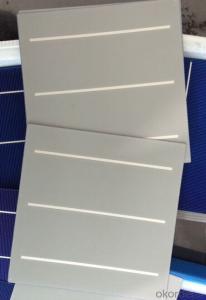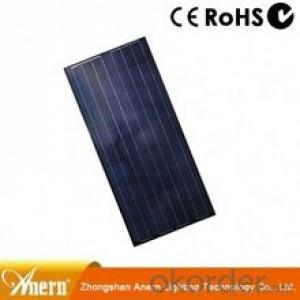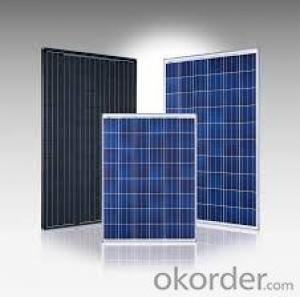Poly Solar Cells Lower than 4Watt Eff Better Price
- Loading Port:
- Shanghai
- Payment Terms:
- TT or LC
- Min Order Qty:
- 30000 pc
- Supply Capability:
- 1000000 pc/month
OKorder Service Pledge
OKorder Financial Service
You Might Also Like
Electrical Characteristic
Efficiency (%) | Pmpp (W) | Umpp (V) | Impp (A) | Uoc (V) | Isc (A) | FF (%) |
17.25 | 4.197 | 0.524 | 7.992 | 0.62 | 8.458 | 80.03% |
17 | 4.137 | 0.524 | 7.876 | 0.619 | 8.353 | 80.01% |
16.75 | 4.076 | 0.522 | 7.81 | 0.617 | 8.286 | 79.73% |
16.5 | 4.015 | 0.518 | 7.746 | 0.613 | 8.215 | 79.73 |
16.25 | 3.955 | 0.515 | 7.683 | 0.61 | 8.144 | 79.61% |
16 | 3.894 | 0.512 | 7.613 | 0.608 | 8.075 | 79.31% |
15.75 | 3.833 | 0.51 | 7.534 | 0.605 | 8.058 | 78.62% |
15.5 | 3.772 | 0.508 | 7.453 | 0.604 | 8.02 | 77.87% |
15.25 | 3.771 | 0.505 | 7.35 | 0.604 | 9.997 | 76.83% |
15 | 3.65 | 0.503 | 7.271 | 0.604 | 7.989 | 75.64% |
14.5 | 3.529 | 0.499 | 7.067 | 0.604 | 7.988 | 73.14% |
14 | 3.407 | 0.499 | 6.833 | 0.604 | 7.833 | 72.01% |
Advantage Of Poly Solar Cell 156mm
1: High quality cell, Level A cell (14%—17.5%)
2.Dimensione:156*156mm Diagonal:200mm
3: Qualified certification: TUV,CE certification.
4: Warranty: five years for whole unit
Usage/Application Of Poly Solar Cell 156mm
Packaging & Delivery Of Poly Solar Cell 156mm | |
Packaging Detai | Packaging Detail:Export Carton and Pallet or under customer request. |
Delivery Detail:10-20days | |
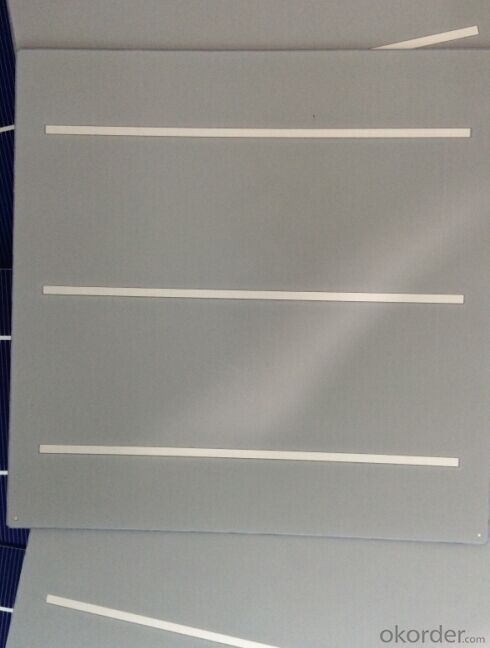
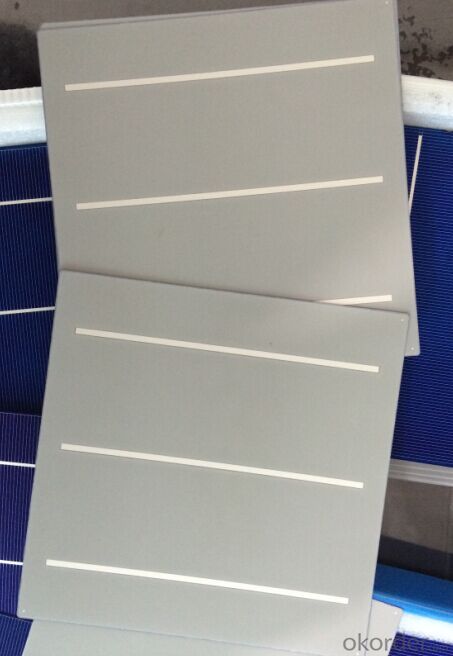
Solar cells are typically named after the semiconducting material they are made of. These materials must have certain characteristics in order to absorb sunlight. Some cells are designed to handle sunlight that reaches the Earth's surface, while others are optimized for use in space. Solar cells can be made of only one single layer of light-absorbing material (single-junction) or use multiple physical configurations (multi-junctions) to take advantage of various absorption and charge separation mechanisms.
- Q:Is there any easy way to make a solar cell? I want to make a DIY solar cell with my child at home.
- I sent a private message to you about my personal experience of diy solar cell.
- Q:The advantages and effects of solar energy
- Water boilers, dryers, heating and cooling, greenhouse and solar houses, solar cookers and high temperature furnaces, desalination plants, pumps, thermal power plants and solar medical equipment.
- Q:Can solar cells be used in disaster recovery efforts?
- Yes, solar cells can be used in disaster recovery efforts. They provide a reliable and sustainable source of electricity, which is crucial in disaster-stricken areas where power infrastructure may be damaged or inaccessible. Solar cells can be used to power emergency communication systems, medical equipment, lighting, and charging stations for essential devices. They are portable, easy to deploy, and can significantly contribute to the relief and recovery efforts in disaster-affected regions.
- Q:How do solar cells perform in areas with high humidity and saltwater exposure?
- Solar cells generally perform well in areas with high humidity and saltwater exposure. However, prolonged exposure to high humidity and saltwater can potentially degrade the performance and lifespan of solar cells. The humidity can cause moisture to accumulate on the surface of the solar panels, leading to reduced efficiency. Additionally, saltwater exposure can corrode the metal components of the solar cells, further impacting their performance. To mitigate these issues, manufacturers often use corrosion-resistant materials and coatings for solar panels deployed in coastal regions or areas with high humidity. Regular maintenance and cleaning can also help ensure optimal performance in such environments.
- Q:Can solar cells be used in residential homes?
- Yes, solar cells can be used in residential homes. They can be installed on rooftops or in open spaces to generate electricity from sunlight, reducing reliance on traditional energy sources and lowering electricity bills.
- Q:What is the impact of hurricane-force winds on solar cell efficiency?
- Hurricane-force winds can have a significant impact on solar cell efficiency. These strong winds can cause physical damage to the solar panels, such as breaking or displacing them, which directly affects their ability to generate electricity. Additionally, debris and flying objects carried by the winds can scratch or shatter the protective glass covering the solar cells, reducing their efficiency further. Therefore, the impact of hurricane-force winds on solar cell efficiency is generally negative and can result in a temporary or permanent decrease in energy production.
- Q:What is the impact of solar cells on reducing water usage?
- Solar cells have a positive impact on reducing water usage as they generate electricity without requiring water for cooling, unlike traditional power plants. This helps conserve water resources and reduces the strain on water supplies, particularly in regions facing water scarcity.
- Q:Can solar cells be used for large-scale power generation?
- Yes, solar cells can be used for large-scale power generation. By installing a large number of solar panels in solar farms or on rooftops, they can generate significant amounts of electricity. With advancements in technology and decreasing costs, solar power is becoming an increasingly viable option for large-scale power generation.
- Q:How do solar cells perform in areas with frequent thunderstorms?
- Solar cells can still perform efficiently in areas with frequent thunderstorms, although their performance may be affected during periods of heavy cloud cover or rainfall. Thunderstorms can temporarily reduce sunlight exposure, leading to a decrease in solar cell output. However, solar cells are designed to withstand various weather conditions, and their performance can quickly recover once the storms pass. Additionally, advancements in solar technology, such as the use of anti-reflective coatings and improved cell designs, help to enhance performance even in less ideal weather conditions.
- Q:How is the efficiency of a solar cell calculated?
- The efficiency of a solar cell is calculated by dividing the maximum power output of the solar cell by the total amount of solar energy it receives.
1. Manufacturer Overview |
|
|---|---|
| Location | |
| Year Established | |
| Annual Output Value | |
| Main Markets | |
| Company Certifications | |
2. Manufacturer Certificates |
|
|---|---|
| a) Certification Name | |
| Range | |
| Reference | |
| Validity Period | |
3. Manufacturer Capability |
|
|---|---|
| a)Trade Capacity | |
| Nearest Port | |
| Export Percentage | |
| No.of Employees in Trade Department | |
| Language Spoken: | |
| b)Factory Information | |
| Factory Size: | |
| No. of Production Lines | |
| Contract Manufacturing | |
| Product Price Range | |
Send your message to us
Poly Solar Cells Lower than 4Watt Eff Better Price
- Loading Port:
- Shanghai
- Payment Terms:
- TT or LC
- Min Order Qty:
- 30000 pc
- Supply Capability:
- 1000000 pc/month
OKorder Service Pledge
OKorder Financial Service
Similar products
New products
Hot products
Hot Searches
Related keywords
